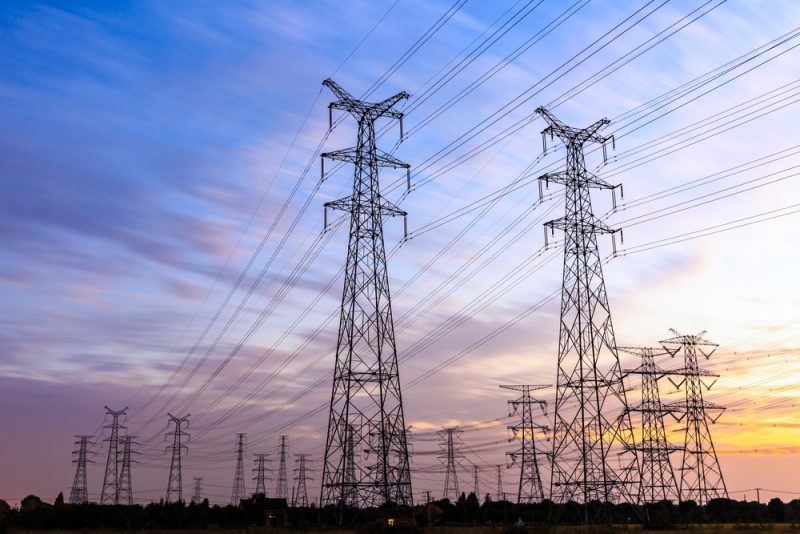EEI report urges FERC to review returns for private investment in transmission infrastructure

Aiming to strengthen U.S. energy infrastructure, a new white paper from the Edison Electric Institute (EEI) calls for the Federal Energy Regulatory Commission (FERC) to ensure reasonable rates of return are in place in order to continue attracting investment in the nation’s electric transmission system.
Investments in transmission infrastructure not only provide customers with reliable electricity at affordable costs, but also integrate technologies that modernize the energy grid by improving resiliency, safety and access to renewable energy.
Utilities continue to make major investments in improving the transmission system. The U.S. investor-owned electric companies EEI represents invested nearly $21 billion in transmission projects in 2016 and plan another estimated $90 billion in transmission infrastructure investments through 2020, the report said.
However, the report, which was prepared by ScottMadden Inc., a leading energy consulting firm, on behalf of EEI, argues that the method FERC uses to establish allowed shareholder returns on equity (ROE) may not support the level of private investment needed to maintain the grid going forward.
“Maintaining, expanding, and enhancing the transmission system requires ongoing investment, and it is imperative that the commission foster this investment by providing stable, predictable, and adequate returns to the investors and owners of the transmission infrastructure,” said the report.
Further, FERC’s methodology for determining the allowed ROE needs to provide the reasonable returns to support an electric company’s ability to attract capital over multiple years and through the gyrations of different market cycles.
The report examines the limitations of FERC’s two-step discounted cash flow (DCF) model to determine an electric utility ROE.
“Based on our review of FERC’s two-step DCF approach, we are concerned that a formulaic application of the model may not currently produce reliable estimates of the cost of equity,” ScottMadden and EEI said in a joint statement to Daily Energy Insider. “Our analysis shows FERC’s two-step DCF model results have begun to deviate from other model estimates, and are inconsistent with relevant benchmarks, such as state-level authorized returns, natural gas pipeline authorized ROEs, and earned returns for the overall market.”
In addition, risks assumed by investors in transmission infrastructure are different from other types of electric system investments due to their higher cost, long lead time, complex state and federal permitting processes and development opposition from certain stakeholders.
“This disconnect between DCF results and investment risk discourages investment in transmission and is inconsistent with the U.S. Supreme Court’s long-established foundational standards for assessing whether rates are just and reasonable,” the report said.
Changes to the current DCF model’s assumptions are needed, as is a re-evaluation of FERC’s approach to calculating ROE, according to the report.
The white paper makes several suggestions to improve FERC’s two-step DCF approach, such as broadening the group of comparison companies used as proxies and using additional estimates of short-term and long-term growth.
“However, it also is important to recognize that in practice, investors use multiple cost of equity estimation methods, and that those methods also provide useful information in determining a fair return,” ScottMadden and EEI said. “The DCF model is just one tool in the toolkit, and may not be the most reliable approach under certain market conditions. Regardless of the models employed, informed judgment must be applied to determine the applicability of individual model results in the context of the capital market environment.”
One change recommended in the paper is to revisit the gross domestic product (GDP) growth rate assumption that is a component of the model used to estimate electric transmission utility ROE when FERC adopted the two-step DCF approach in Opinion No. 531 in 2014.
Examining the issue is timely. Earlier this year, the U.S. Court of Appeals for the D.C. Circuit vacated and remanded Opinion No. 531, presenting an opportunity for FERC to review its DCF model.
“It is not clear that investors expect the electric industry, which is undergoing significant transformation to meet changing energy resource mixes and dynamic demand, to grow at a rate consistent with the GDP forecasts relied on by FERC,” ScottMadden and EEI said in their statement.
The paper suggests reducing how much weight the GDP growth rate is given in applying the two-step DCF method, and calls for incorporating an inflation-adjusted long-term GDP estimate – or just removing GDP from the DCF model altogether.
EEI hopes the white paper will facilitate a discussion about how transmission investment ROE are assessed, while still striking a balance between investor and customer interests.
“EEI believes the time is now for the commission to step-back and to assess whether the inherent limitations (or shortcomings) of the DCF, and the adjustments the commission has made to the DCF methodology, are leading to outcomes necessary to meet capital attraction standards and policy goals at a time when the transmission system requires expansion and enhancement,” the report said.
